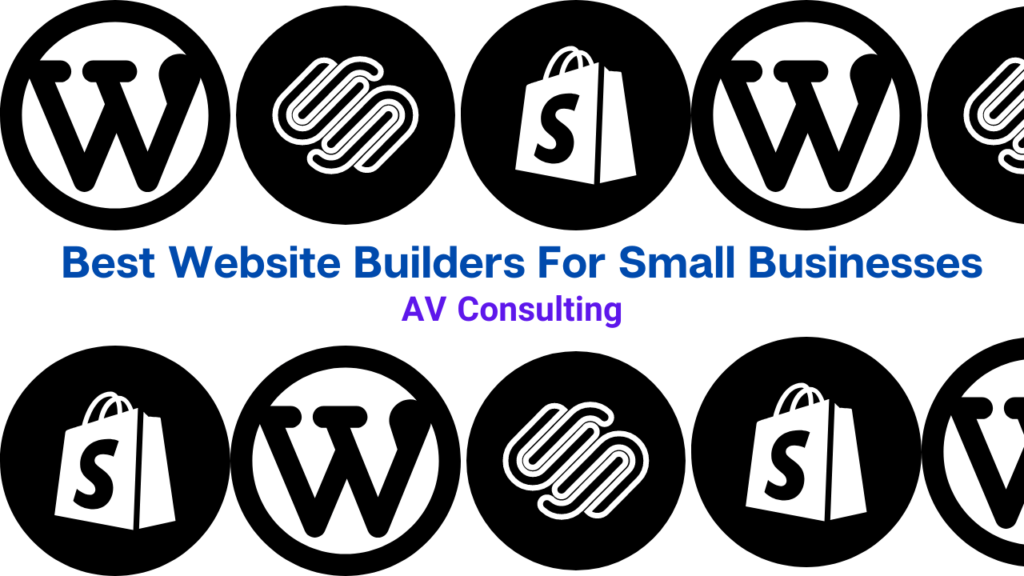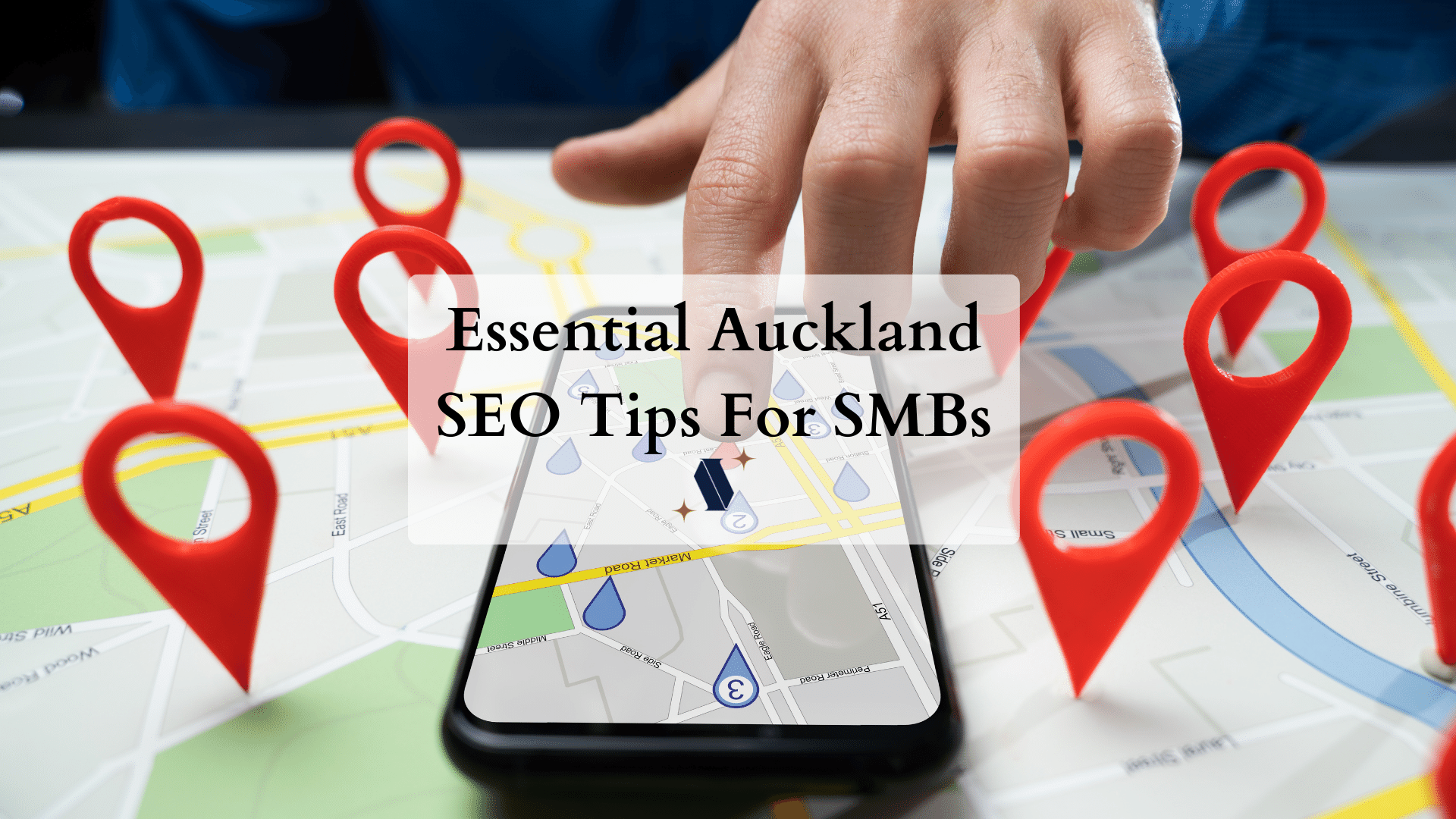Introduction
If you want to build a website for your small business, the chances are you want to use a website builder such as Shopify, WordPress, Squarespace, etc. In this article we will compare all the famous website builders for small businesses in New Zealand.
A website builder needs to meet these 6 pillars to be great:
- Speed
- Ease of use
- Customizability in terms of UX
- e-Commerce capability
- Scalability for e-Commerce
- Security
Website builders like Wix, WordPress, Squarespace and Shopify have become increasingly popular in recent years, allowing developers, designers, individuals and businesses alike to create websites without needing to have extensive knowledge in coding. With builders like WordPress and Shopify you can go as deep as you want for bespoke designs or stick to a user-friendly theme or template.
With so many website builders available, it can be overwhelming to choose the right one for your needs. In this article, we compare Wix, Squarespace, WordPress and Shopify, their pros and cons, and what to look for when choosing between these platforms.
Summary
Here’s a quick summary to this article: site speed is the most critical factor in a website. Shopify is the fastest Content Management System for e-Commerce. Squarespace and Wix websites are fast but not suitable for e-commerce businesses planning to scale. As a designer / UX specialist, you can get creative on Squarespace and produce exceptionally polished and professional websites. Wix is a DIY platform – as in Do It Your Own, and don’t hire a developer. You can do a lot with WordPress but the quality of a WordPress site hinges on the talents and experience of its developer.
If you like you can pick one of the platform to dive right into our detailed analysis:
A. Website Builders Defined
Website builders are tools that help people build websites without neeting to write codes. They allow users to construct an entire website using drag-and-drop, templates, and other visual tools.
Website builders are particularly ideal for small businesses and personal websites. They offer a relatively quick way to establish an online presence without, generally speaking, requiring a steep learning curve.
As the website builder industry has matured, the customisation capability of most has evolvbed to a point where you will likely require a designer and developer to create a professional and polished website. But this is not to say you can’t keep it simple.
B. Website Builder vs Content Management System (CMS)
CMS’s allows user to manage website content. Website builders, on the other hand, can focus on providing the tools to build a website. Additionally, website builders offer a more linear web development experience using an interface(usually a drag-&-drop interface). However, they lack the flexibility offered by a CMS.
C. Importance of website builders for businesses
Website builders like Wix allow business owners to dabble in digital marketing and postpone the need to engage a website design agency. When a business is it’s infancy, having an expensive website may be overkill. Website builders bridge the gap and give businesses the online presence they need until they have the budget to engage a digital marketing agency or a web designer. We, digital marketers, use website builders but use their customization options more extensively.
D. All Website Builders Cost
Website builders all have promotional free plans. But this is a little like European car pricing, where most models start with a low price and have next to no options. If you want to buy one, the base model is not a realistic option.
Similarly, if you want to run a business and have some hope of success, you’ll need a premium plan. Starter premium plans range between $20NZD to $40 NZD per month plus app or plugin purchases. May crucial tools are available on pre-plans such as Google Analytics—which allows you to track your website’s traffic— this is not available on Wix’s free plan.
E. SEO Integration:
SEO (Search Engine Optimisation) is a broad term and refers to on-page and off-page SEO. It’s a patient endeavour, updating a website, expanding its site map and adding content to fill knowledge gaps online. Most website builders have acceptable onpage SEO tools – that is, they tell what you need to fix to ensure Google can crawl your web pages with ease and maintain a speedy site. But this does not refer to an SEO campaign that requires specialists and content writers.
| Wix | Good for small businesses and referral traffic Fast website speed Numerous customization options | May require additional costs for complex SEO tasks |
| Shopify | Ideal for e-commerce websites Comprehensive on-page optimization Flexibility to use apps or edit code manually | May not be suitable for non-e-commerce websites |
| WordPress | Extensive library of free apps and plugins Highly customizable for on-page SEO | Not recommended for e-commerce websites May require advanced technical skills |
| Squarespace | User-friendly interface Many customization options | Limited advanced SEO features |
Wix
Wix is an excellent option for small businesses that primarily rely on referral traffic. It offers good website speed and numerous customization options. However, for more complex on-page SEO tasks, you may need to purchase additional apps or extensions. Wix’s user-friendly interface makes it easy for beginners to build and manage their websites.
Pros:
- Good for small businesses and referral traffic
- Fast website speed
- Numerous customization options
Cons:
- May require additional costs for complex SEO tasks
Shopify
The platform offers comprehensive on-page optimisation options, often eliminating the need for additional SEO tools. For more advanced SEO issues, users can either install apps or edit the code manually.
Pros:
- Ideal for e-commerce websites
- Comprehensive on-page optimization
- Flexibility to use apps or edit code manually
Cons:
- May not be suitable for non-e-commerce websites
WordPress
If you’re not a professional developer or have difficulty managing databases, it may be better to stick with Wix, Squarespace, or Shopify. Additionally, using WordPress for e-commerce websites is not recommended, as it may limit your store’s growth potential in the future.
Pros:
- Extensive library of free apps and plugins
- Highly customizable for on-page SEO
Cons:
- Not recommended for e-commerce websites
- May require advanced technical skills
Squarespace
Squarespace is a user-friendly website builder with many customization options. However, for more complex settings, you may want to consider migrating to Wix or WordPress. Squarespace is an excellent choice for businesses that require a visually appealing website without the need for advanced SEO features.
Pros:
- User-friendly interface
- Many customisation options
Cons:
- Limited advanced SEO features
F. Security – SSL
SSL (Secure Sockets Layer) is a security protocol used to establish an encrypted and secure connection between a client (web browser) and a server (website) over the internet. It ensures that any sensitive data transmitted between the two parties remains private and secure. SSL is commonly used for protecting sensitive information such as login credentials, credit card details, and personal data.
SSL and similar security protocols is integrated with Shopify, Squarespace, and Wix. You do not need to purchase a separate SSL certificate for these website builders.
WordPress and SSL security are essential for protecting your website and its visitors. SSL (Secure Sockets Layer) is an encryption technology that secures the connection between a user’s browser and your WordPress hosting server. By enabling SSL, your website will use HTTPS instead of HTTP, and a padlock sign will appear next to your website address in the browser to indicate that it is secure.
WordPress users will need to purchase SSL separately and install it on their website. Which is a manual process compared to website builders like Squarespace.
G. Payments systems
All websites have a secure payment system through third-party payment gateways like Stripe, and PayPal. They all support safe and secure payment gateways.
Wix Overview
| Pros of using Wix | Cons of using Wix | ||
|---|---|---|---|
| Inexpensive pricing plans | User-friendly, easy to use editor | Customization is limited | Analytics not available on free plans |
| Hundreds of design templates to choose from | Built-in SEO functionality | Storage limits on all plans | Can’t change templates once site is live |
| eCommerce functionality available | Apps required to add functionality can get expensive | ||
Wix is a popular website builder that provides a platform for close to 200 million users worldwide. Wix was initially developed for designers but has grown in popularity, particularly among entrepreneurs and small business owners. It’s objectively the most user-friendly website builder. You can be a technophobe and build your website on Wix. But this comes at the cost of a lack of meaningful customisation compared to WordPress, Shopify, and Squarespace.
A. Wix editors
You can create a Wix site using one of three Wix editors:
- Wix ADI – short for Artificial Design Intelligence. The ADI asks you a few questions and builds the site based on your answers. This is ideal for beginners. Think of this as chat GDP for website development. One shortfall of using Wix ADI is that it offers less customization than the Wix Editor. Users do not have as much control over the design as they would with Wix Editor. Wix ADI is not ideal for more complex websites that require advanced features or custom coding.
- Wix standard editor – You choose a Wix template and customize it using the standard Wix drag-and-drop editor. This customization may be limited by the design of the template you select.
- Wix Editor X – developed with designers in mind and comes with a full suite of advanced capabilities, including scalable font sizes, grid layout, stack and scale media, custom breakpoints, docking and advanced sizing control.
- Velo by Wix – lets you access and edit the raw HTML behind your template for greater customization. This option allows you to customise every element on your site to your heart’s desire. You need to be comfortable with HTML code editing and thus can’t be a beginner.
B. Wix Pricing plan
Wix has around 7 plans. Their yearly subscription is cheaper. If you’re a small business offering services, consider Wix Pro. It takes care of basic branding, and you get a free logo.
If you need an eCommerce website, i.e. selling items online, consider their Business Unlimited plan.
Wix’s plans range between:
- $23/month to $64/month paid monthly (USD)
- $16/month to $59/month paid yearly (USD)
C. Templates
Wix has hundreds of templates to choose from. Most of the designs are up to date. However, most look stock standard. They are acceptable for a DIY job and give your business a relatively polished look, but don’t expect the templates to look as well as an experienced UX specialist designing your site.
Wix has templates for various industries, including restaurant templates that offer specific modules like dedicated menu templates and booking features.
One drawback to using templates is that it is not possible to apply a different template to a site that has already been created.
D. Customer support
Wix provides customer support 24/7 through email tickets and callback service. However, response times aren’t always prompt.
From our experience, you need a lot of patience with their customer support and do outside research. Wix’s customer support, as with most online services, takes time, and it’s only sometimes helpful.
E. E-Commerce
Wix is one of the most inexpensive ways to start an eCommerce site. Shopify is objectively better for eCommerce based on any metric important for an eCommerce site, but it’s significantly more expensive. You can choose from several Wix eCommerce plans that range between $23 and $49 per month. These plans are:
- Business Basic
- Business Unlimited
- Business VIP
- Enterprise
Can you run an online store with hundreds of products with Wix? Probably not. Wix was not designed for eCommerce. Being able to sell online was a function that was added later.
We recommend using Wix if you have up to 30 products and are unsure whether the store will generate an acceptable level of sales for the foreseeable future.
Recently, we developed an eCommerce site on Shopify for a client. After a year, the client chose to move to Wix because Shopify was expensive, and the store wasn’t generating the forecasted sales.
Wix is capable of performing all the stock standard eCommerce functionalities, such as:
- Accept payment online
- Review
- Subscriptions
- Multiple currencies
- Marketplace selling
- Dropshipping products
- Reporting
- Customer loyalty program etc
The main takeaway here is Wix’s e-Commerce is somewhat limited.
F. Pros of using Wix
Wix is an inexpensive, user-friendly, website-building platform that offers hundreds of design templates and built-in search engine optimization (SEO). Although the SEO part mainly relates to site speed and basic On-Page SEO. You will not achieve any significant organic traffic milestones using Wix by itself. Some of Wix’s advantages are:
- Easy to use: Wix’s drag-and-drop building tools make its editor extremely easy to use, even for beginners with no tech experience.
- E-commerce tools: Wix has e-Commerce capability. Although the platform allows stores to sell up to 50,000 products, the platform is not designed for big e-Commerce stores. If you have 10 products to sell, you can utilize Wix.
G. Cons of using Wix
- Customization is limited
- Visitor analytics are not available on free plans.
- Storage limits on all plans.
- You can’t change templates once your site is live
- Apps required to add functionality can get expensive
- Not natively an e-Commerce platform
Shopify
| Pros | Cons |
|---|---|
| Easy to use | Monthly subscription fee of around $100 NZD |
| Excellent design options | Additional fees for transactions, add-ons, and payment processing |
| Secure | Need for a developer for unique functionalities, bespoke customization, and designs |
| Excellent customer support service | Not suitable for passive site building |
| Built for eCommerce with functionalities like a reliable payment system, inventory management, responsiveness, shipping & tax calculations, customer service, marketing analytics, and fast performance | |
| Stable, fast, customizable, and responsive on all screen sizes | |
| Allows for drop shipping and selling subscriptions |
Shopify description is best explained by its tagline: “Millions of the world’s most successful brands trust Shopify to sell, ship and process payments anywhere“
The HTML infrastructure for an eCommerce site is vastly different to a lead generation, service-based website. Until relatively recently, developing an eCommerce store was an expensive and complicated endeavour, where clients needed to engage an experienced developer to construct an eCommerce store from the ground up. Along the road, builders like WooCommerce came along to add eCommerce capability to WordPress sites. But Shopify is the first stable, reliable and professional eCommerce builder.

With Shopify, all the chores that were required from an eCommerce store that added to the cost of the website significantly are either native or can be added with an application, such as:
- Reliable payment system – although they all have secure payment systems
- Inventory management
- Responsiveness
- Shipping & tax calculations
- Customer service
- Marketing Analytics
- Fast
- SEO friendly
- In-person card transaction
Shopify has done with eCommerce what the iPhone did with phones – reliable apps adding functionality to your eCommerce site with a platform that already has extensive and reliable functionality.
A. Pros of using Shopify
It’s impossible to draw up a pros and cons list for Shopify without sounding generic. Shopify is easy to use, has excellent design options, it’s secure, and offers the best customer support service compared to other website builders. Shopify is a website builder designed for eCommerce. For us, it checks all the pillars of what is required to be a great e-commerce platform, including:
- Stable
- Fast
- Customisable
- Drop shipping option
- Responsive on all screen sizes
- Sell subscriptions
The platform has no downsides compared to other website builders in terms of capability and functionality.
B. Cons of using Shopify
Most of Shopify’s cons are comparable to other builders, such as transaction fees, add-on fees, payment processing fees, and the need for a developer for unique functionalities, bespoke customisation and designs.
The only hindrance or con to Shopify is the monthly subscription, which is around $100 NZD per/month. Noted Shopify has a free plan and its base plan is around $60 NZD per month. However, once you add a few necessary apps, your monthly subscription quickly climbs to $100 NZD a month.
Don’t use Shopify if you plan to build a site and let it simmer.
C. Costs of plans
See the table below for Shopify Plans. Note the prices are in USD. These prices are higher when converted to NZ dollars.
| Plan Name | Price Per Month | Features | Notable features |
| Basic Shopify | $39 USD / month | 2 Staff accounts, 4 Locations, Unlimited products, 24/7 support, Sales channels, and more. |
|
| Shopify | $105 USD / month | 5 Staff accounts, 5 Locations, Everything in Basic Shopify, Professional reports, and more. |
|
| Advanced Shopify | $399 USD / month | 15 Staff accounts, 8 Locations, Everything in Shopify, Advanced report builder, and more. | |
| Shopify Plus | $2,000 USD / month | Custom Staff accounts, Custom Locations, Everything in Advanced Shopify, Customizations, etc. |
Most eCommerce stores will find “Basic Shopify” and “Shopify” more than enough regarding features. One of our clients grew their monthly earnings with Shopify Basic from $500 per month to $12,000 per month.
1. Included in all plans:
standard in all plans:
- 24/7 support
- automatic updates to orders, products and inventory,
- Unlimited products
- SSL included
- Abondoned card recovery
2. Additional costs:
Regardless of the plan you subscribed to, you will need to budget for these additional costs:
- Domain
- Premium themes
- Apps
- Development
D. In-person card transaction
Shopify uses mobile POS and card readers. In short, when you have a Shopify store, you can accept payments in person with your phone. Shopify automatically updates your inventory count (if selling a product) as if someone was buying the product from your website. The fancy term for this is “Omnichannel selling” – allowing customers to shop in-store and online.
E. Stable / outage
Stability, ensuring a website is always up and running is especially crucial for e-commerce websites. The margin of error is small, and if customers visit your site when it’s down, they will most likely purchase from another website.
Shopify maintains a 99.9% uptime as a platform. This is not to say it’s never down but having worked with Shopify for years building websites for clients, we can’t recall a time when our client’s website had an outage.
F. Fast
Shopify is the fastest e-commerce website builder.
Speed is crucial for e-commerce websites as it directly impacts user experience, conversion rates, and search engine rankings. A fast-loading website ensures an impressive user experience, while a slow-loading website can hurt user experience, lead to customer churn, and damage your brand reputation. Website speed influences your entire digital strategy, from visibility (SEO and SEM), user experience, and ultimately conversions and revenue. eCommerce websites could lose millions for every second of delay in loading time.
This is part of the reason e-commerce websites don’t use fancy animations. Simplicity, fluency and max speed are essential. This is confirmed by virtually every report that analysis what makes a customer shop from one site over another.
G. Customisable
Shopify offers a high level of customisation, allowing unique, polished and tailored experience for their customers.
You can customize your Shopify theme by using the theme editor. Additionally, Shopify Functions allows developers like us to extend or replace key parts of Shopify’s backend logic with custom code, providing the flexibility of open source.
For more advanced customization, such as creating custom product options, you can use third-party apps in the Shopify App Store.
H. Drop shipping option
Dropshipping is where the store purchases the item from its supplier and has it shipped directly to the customer. As a result, the seller or the e-Commerce store does not see or handle the product.
This model allows sellers to start an online business without the need to hold inventory or manage shipping logistics. However, it also means that the seller has less control over the shipping and handling of the product, which can lead to longer delivery times or quality issues if the supplier is not reliable.
Shopify was the pioneer in website builder dropshipping. Some highlights of dropshipping in Shopify include:
- Convenience: Shopify’s dropshipping apps make it easy to find and add products to your store, automate order processing, and track shipments
- Scalability: You can start small and expand your product offerings as your business grows, without worrying about inventory management.
- Flexibility: Shopify allows you to work with multiple suppliers, giving you a wide range of products to choose from and reducing the risk of relying on a single supplier
I. Responsive on all screen sizes
Responsiveness refers to the ability of a website or application to adapt its layout, images, and other elements to fit different screen sizes, resolutions, and orientations. This ensures the content is displayed optimally and remains user-friendly on various devices, such as phones, tablets and desktop computers.
This is especially crucial now because customers’ shopping journey often includes a variety of platforms, i.e. customers search on their phones and purchase on their laptops.
Shopify themes are built to be responsive. Their layout adapts to most screen sizes. If you have hired a developer to build your Shopify site, they may need to, and likely will, edit the Java script to customise the theme. Indeed this is the added value of a developer. However, this impacts a website’s responsiveness, requiring more debugging and testing of the website on different screens.
J. Sell subscriptions
Shopify allows for subscriptions using an app. If your store is on the Shopify plan or higher, you can track subscription data in special reports.
Virtually all market research recommends giving customers more payment methods to increase the chances of a purchase. Adding a subscription option is one of these methods.
There is more than one way of selling products online. The subscription model can help grow some businesses and/or help stabilise a part of their revenue by offering customers discounts when they subscribe and purchase periodically.
K. Comparison with other website builders
Shopify is a superior website builder to Wix, Squarespace, and WordPress WooCommerce. It’s the best platform for e-Commerce. It’s fast, stable, reliable and expansive in functionalities.
The only place Shopify losses is on pricing. The monthly premiums can compound over time compared to WooCommerce or Wix. A Shopify store in New Zealand will cost between $70 to $100 per month, whereas competing platforms cost between $30 and $50 per month.
Shopify stores also offer enough customisation where the cost of hiring a developer and designer is justified. The platforms can get complicated when editing code and accessing its backend for customisation.
Overview of Squarespace
| Pros | Cons |
|---|---|
| Polished User Experience | Limited customization |
| Immaculate websites comparable to high-end WordPress sites | Hard to scale an e-commerce store |
| Over 60 customizable high-quality templates | More suitable for service-based businesses rather than e-commerce |
| Logo designing app, content blocks, and drag-and-drop functionalities | |
| E-commerce solutions with features like unlimited products, inventory management, PayPal and Stripe payments, advanced shipping, and more |
Squarespace is a refined website builder. It has far more of a polished User Experience than Wix. A skilled designer can produce immaculate websites comparable to high-end WordPress sites. Currently, Squarespace ranks as the third most popular hosted website provider.
There is a vast difference between a developer and a designer and Squarespace requires little developer knowledge. However, the quality of a Squarespace website depends on the talent and experience of its designer.

B. Pros of using Squarespace
Squarespace is developed enough that it justifies hiring a professional designer to design your site on the platform.
If you wish to design your website, Squarespace provides over 60 high-quality templates that are customizable to suit your requirements.
The platform also offers a logo designing app and various content blocks and drag-and-drop functionalities to help users create a comprehensive online presence.
In addition to website building, Squarespace offers e-commerce solutions through its Basic Commerce and Advanced Commerce plans. These plans provide features like unlimited products, label printing, inventory management, PayPal and Stripe payments, abandoned cart recovery, advanced shipping, gift card creation, and flexible discounts.
C. Cons of using Squarespace
Squarespace is limited in customisation and, more importantly, hard to scale an e-Commerce store. However, if you’re business provides services, it’s unlikely you will ever come across these limitations.
D. Comparison with other website builders
As a brochure or lead gen website, assuming you have an experienced designer, Squarespace rival WordPress add Shopify.
It’s superior to Wix but less user-friendly if you’re developing your own website.
WordPress
| Pros | Cons |
|---|---|
| Flexible – Numerous ways to build a site, customise templates, and use WooCommerce for e-commerce | Open source – WordPress sites can be prone to instability and bugs if not managed properly |
| Inexpensive – Low ongoing costs for hosting, domain, and SSL (excluding developer fees) | Speed – WordPress sites can be slow if not optimized properly, impacting site performance |
| Security – SSL integration is manual and optional, leaving the site vulnerable without it | |
| No central support – Relies on the community for support, no dedicated helpline available |
WordPress is an open-source website builder. Developers can:
- Access the backend codes with ease and produce breathtaking websites with creative animations
- User template designs; or
- Build an original design using elementor pro where little to no coding is needed
There are spectacular websites built on WordPress with impressive organic traffic and less-than-impressive websites.
Because WordPress grants developers and designers a broad latitude in customisation, the quality of a WordPress website hinges on the skill, experience and diligence of its developer. You can have very fast and slow WordPress sites.
WordPress offers a wide range of themes and plugins, which allow users to customize their website’s appearance, functionality, and performance. One of the critical strengths of WordPress is its flexibility.
B. Pros of using WordPress
1. Flexible
There are numerous ways to build a site, whether with code, using a template, or customising an existing template. WordPress allows you to do it all.
This also impacts your digital marketing campaigns. SEO specialists have a comprehensive range of tools to increase a WordPress site’s ranking.
WordPress sites can be converted into an e-Comemrce store using WooCommerce.
2. Inexpensive
Not including the fees for a developer, the only ongoing costs for a WordPress site is:
- The host at around $360 per year from Crezy Domains
- Domain at around $40 per year
- SSL at around $50 per year
However, you need to factor in the cost of a developer, which can range between $100 to $300 per hour in New Zealand,
C. Cons of using WordPress
1. Open source
With freedom comes a cost. You need to know what you’re doing in a WordPress site, and be technically fluent. WordPress sites are prone to instability and bugs far more than other website builders because of it’s open-source nature. The bottom line is you need to have trusted if yu have a WordPress site.
2. Speed
Because of the freedom the platform provides, WordPress sites can be slow if a developer is less experienced. Compare this with Wix or Squarespace, where even if you’re newby, your site will nevertheless be relativity fast. For example, the file format of the photo uploaded to a WordPress site impacts the performance of the site. The files need to be WebP. JPEC or IMG file slows the site down.
The speed of WordPress websites can vary depending on various factors, such as the quality of the hosting provider, the optimization of the website’s content, and the number of plugins and external requests.
Some ways to speed up your WordPress site include investing in quality hosting, optimizing images, reducing HTTP requests, and using a content delivery network (CDN).
3. Security
SSL (Secure Sockets Layer) is a security protocol that encrypts data transmitted between a user’s browser and a website, ensuring secure communication and protecting sensitive information. Integrating SSL with WordPress is essential for maintaining website security and improving user trust.
SSL integration with WordPress site is a manual endeavour and optional. You have the option of not acquiring an SSL for a WordPress site and this freedom makes a site vulnerable.
4. No central support
WordPress relies on its community for support. This means there is no 0800 number for you to call.
D. Comparison with other website builders
If you want a WordPress site, engage an experienced developer and designer. Otherwise, stick to Squarespace, Wix, or Shopify.
WordPress does not have training wheels. If your developer is experienced with the platform, then the potential of your site will surpass anything Squarespace or Wix can offer.
If your business is e-Commerce, go with Shopify. The user experience for a shopper is far more fluid than anything WordPress can offer.
Popularity of online shopping in New Zealand
Online shopping in New Zealand has experienced significant growth in recent years. The country’s online spending in the first quarter of 2021 was reported at $1.47 billion, up 27% compared to the same quarter in 2020 and up nearly 50% compared to the equivalent period in 2019. In 2021, New Zealand shoppers spent NZ$7.67 billion online, with a 52% growth in online spending compared to 2019.
Online shopping in New Zealand for 2022 continued to grow, with Kiwis spending more than $2.2 billion on physical goods online during the first quarter of 2022. This represents a 31% increase compared to the first quarter of 2021 and an 86% increase compared to the first quarter of 2020.
Some e-commerce trends to watch out for in 2023 include the increasing normalization of online shopping.
Summary and final thoughts
Shopify, Wix, Squarespace and WordPress each have their distinct advantage. Consider the use and support you have when choosing a website builder:
| Website builder | Requirements | Best for: |
|---|---|---|
| WordPress | Engaging a developer and designer with ongoing support, creative websites, working with a digital marketing agency for SEO and online advertising | Businesses or organizations that offer services |
| Squarespace | Service-based businesses, engaging a designer to design the site, user-friendly interface for periodic changes, flexibility for designers to implement their vision, small e-commerce stores with less than 20 products and not planning to scale soon | Businesses with less than 20 products |
| Wix | Building your own website, not having a digital marketing campaign, brochure sites, no need for designer or developer | Personal or small business brochure sites |
| Shopify | Serious about launching an e-commerce store, having the budget for a developer and designer, expanding the store and volume of sales | Serious e-commerce stores |






